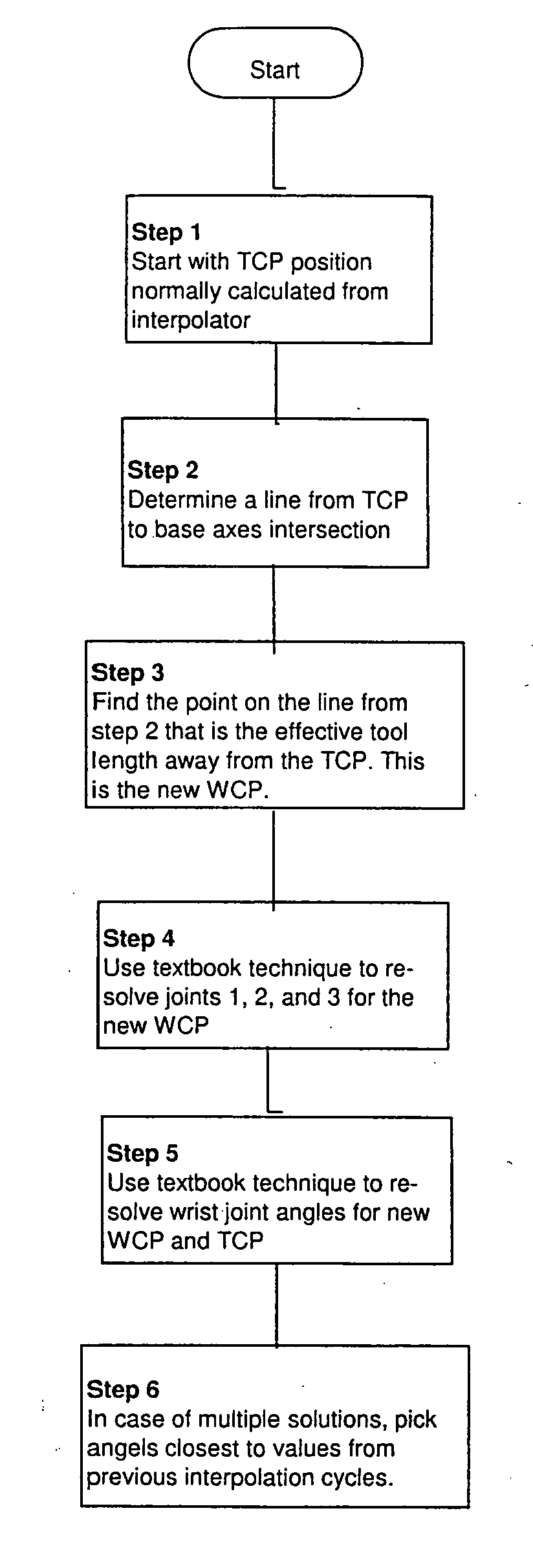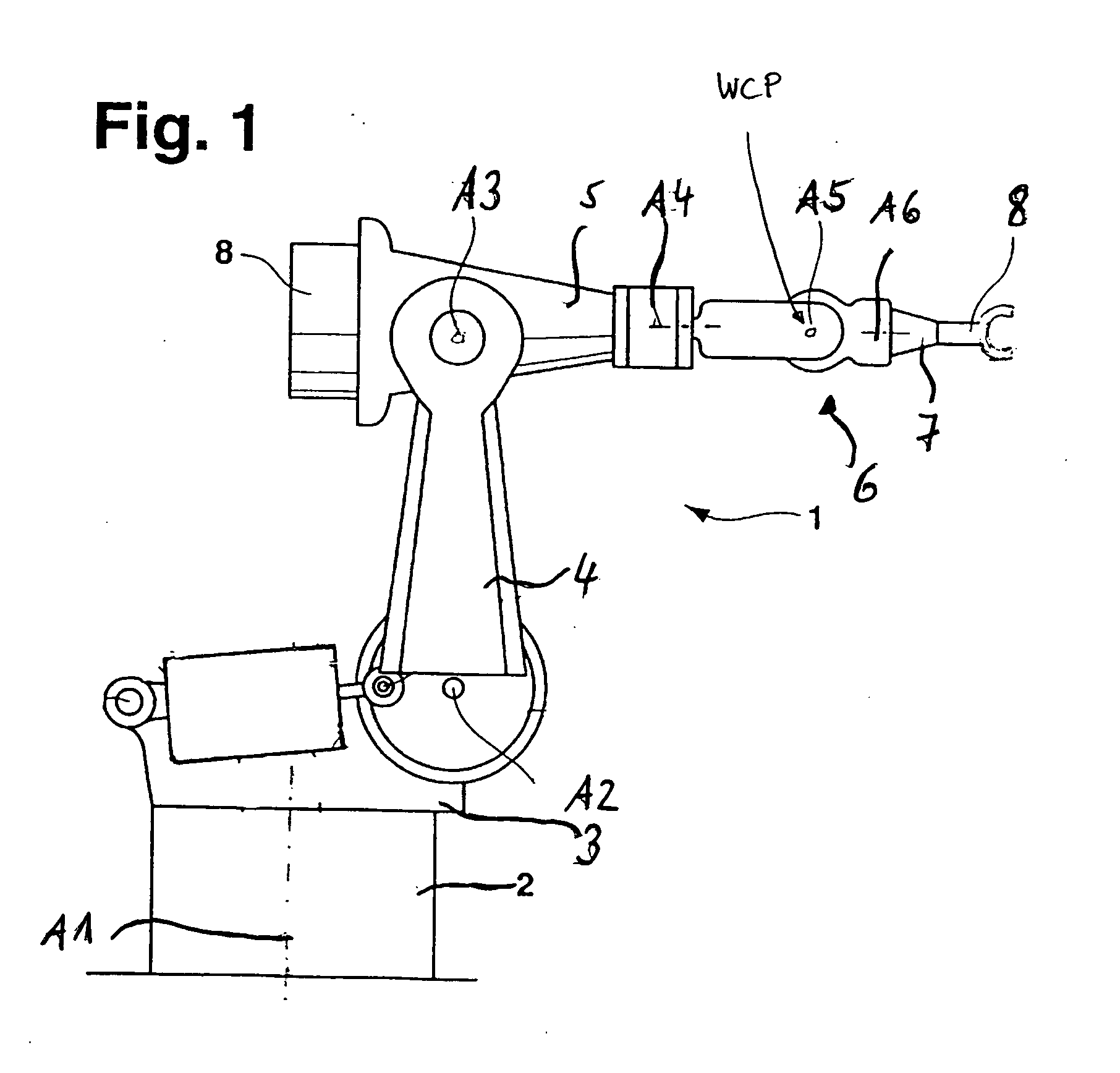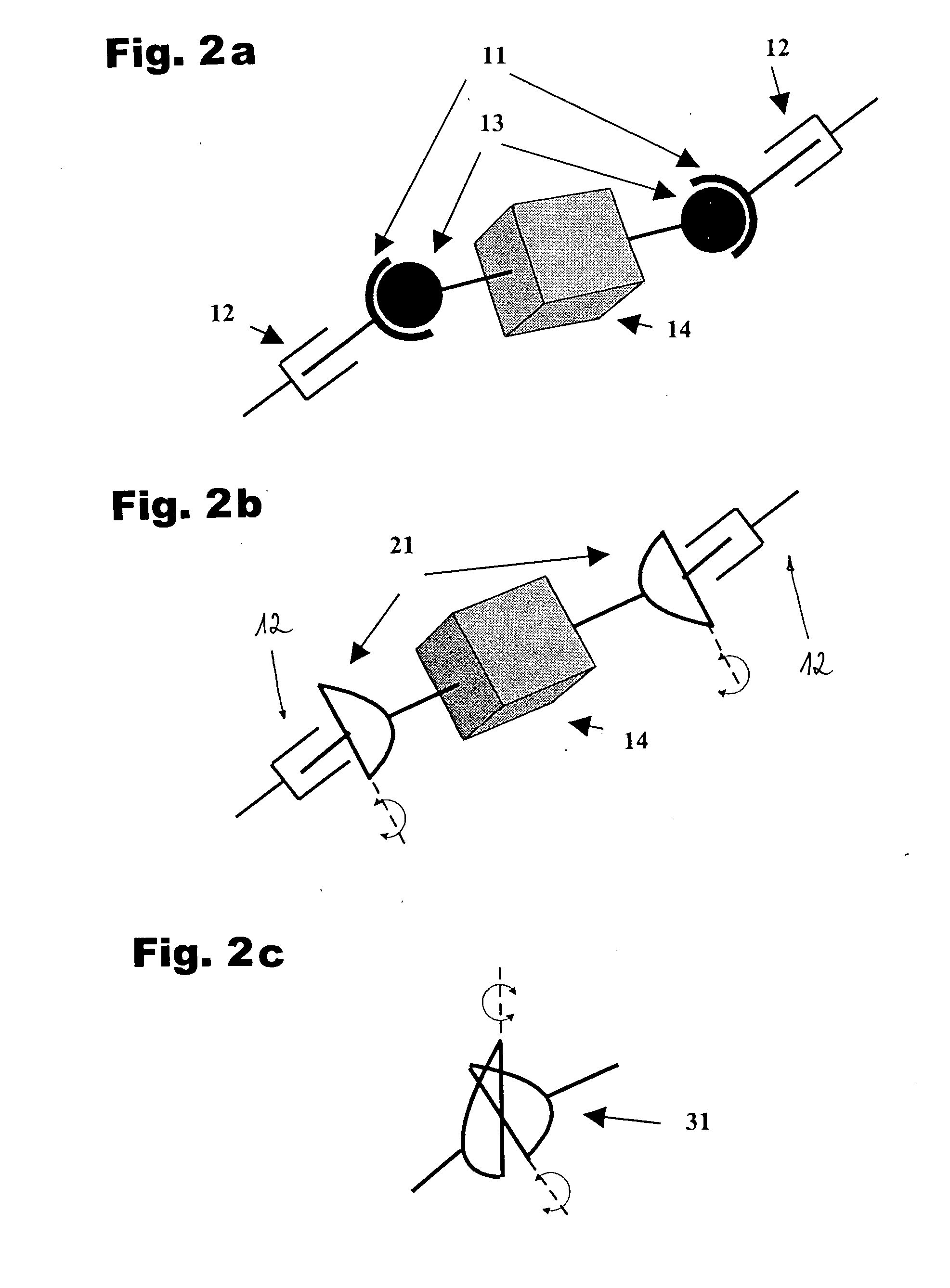Method and device for controlling robot
a robot and robot control technology, applied in the field of robot control methods and devices, can solve the problems of robot robots no longer being able to control themselves, and robots no longer being able to move, so as to reduce overconstraints on parts, increase the working volume of the robot, and increase the range of each robot.
- Summary
- Abstract
- Description
- Claims
- Application Information
AI Technical Summary
Benefits of technology
Problems solved by technology
Method used
Image
Examples
Embodiment Construction
[0059] An inventive industrial robot according has a fixed base 2 carrying a roundabout 3 pivotable about a vertical A1-axis. A first robot arm 4 is pivotably about a horizontal A2-axis connected with the roundabout 3.
[0060] The first robot arm 3 carries, pivotable about an horizontal A3-axis a second robot arm 5. The arm 5 has attached to it a robot hand 6, having three parts each of them being pivotable about an axis A4, A5, and A6, respectively. The axes intersect at the axis A5, which is the wrist center point (WCP) for this particular robot design. The free end of the hand part 7 (pivotable about the A6-axis) is provided with a tool 8, in this embodiment of the invention with a socket of a ball-socket-joint.
[0061] When a workpiece is carried by a single industrial robot a gripper is used that constrains the part in 6 DOF (x, y, z location and rotations about x, y, z).
[0062]FIG. 2a shows attachment to a part 14 by a ball-and-socket joint with e.g. a socket 11 connected to the...
PUM
| Property | Measurement | Unit |
|---|---|---|
| Degrees of Freedom | aaaaa | aaaaa |
| rotation | aaaaa | aaaaa |
| trajectory | aaaaa | aaaaa |
Abstract
Description
Claims
Application Information
 Login to View More
Login to View More - R&D
- Intellectual Property
- Life Sciences
- Materials
- Tech Scout
- Unparalleled Data Quality
- Higher Quality Content
- 60% Fewer Hallucinations
Browse by: Latest US Patents, China's latest patents, Technical Efficacy Thesaurus, Application Domain, Technology Topic, Popular Technical Reports.
© 2025 PatSnap. All rights reserved.Legal|Privacy policy|Modern Slavery Act Transparency Statement|Sitemap|About US| Contact US: help@patsnap.com



